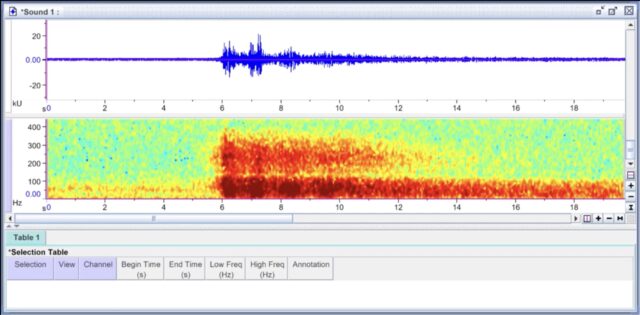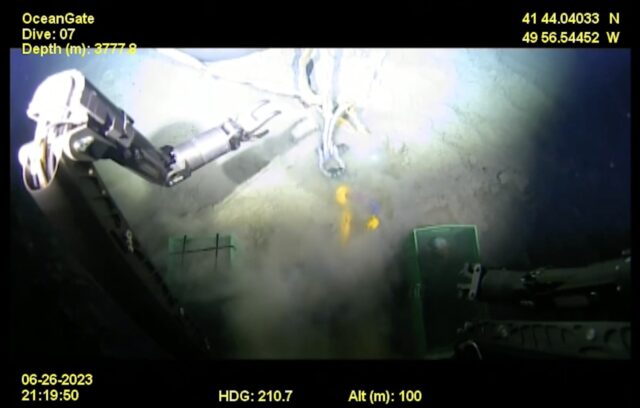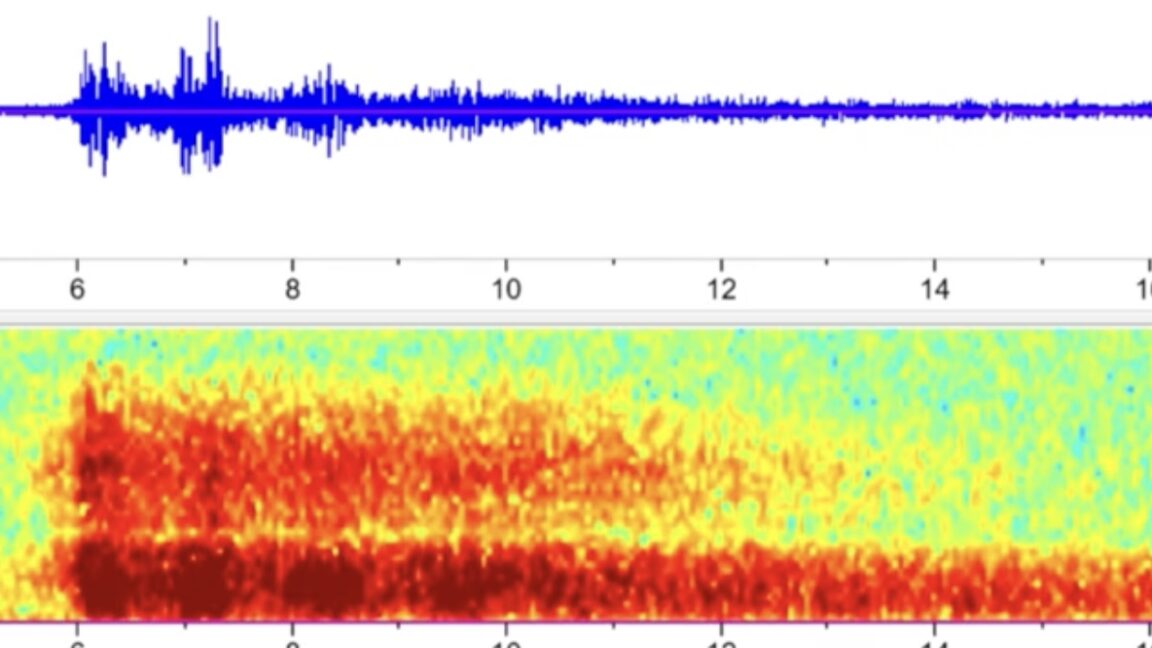The implosion took milliseconds, but its echoes lasted far longer.
Thanks to being an incompressible medium, water transmits vibrations both farther and faster than the air. (Here's a good video explainer on the subject.) This fact helps to explain how a US government-owned "moored passive acoustic recorder" was able to hear and record the 2023 implosion of the doomed Titan submersible—even though the recorder was 900 miles away from the dive site.
That implosion, during an attempted dive to the wreckage of the Titanic, killed five people, including Stockton Rush, the CEO of the company that built and operated the Titan.
The implosion audio was just released publicly by the US Coast Guard's Titan Marine Board of Investigation, which has been investigating the disaster in enormous detail. As part of that investigation, the Coast Guard obtained the audio from the National Oceanic and Atmospheric Administration (NOAA), part of the US Department of Commerce.
The audio isn't much to listen to—just some static followed by a staticky explosive noise that decays in swirling fashion for multiple seconds. The implosion itself, given the pressure the vehicle was under at the time, probably occurred in milliseconds, as you can learn from simulations of the event.
But given that it marks the moment of five deaths, and that it was made from 900 miles away, the recording may be, at least for non-specialists, one of the more interesting bits of evidence to emerge from the investigation. (The investigation board has previously released video of a robotic vehicle recovering parts of the Titan from the sea floor, along with a simulation of the submersible's entire final dive.)

From SOSUS to wind farms
Back in the 1960s, 70s, and 80s, this kind of sonic technology was deeply important to the military, which used the Sound Surveillance System (SOSUS) to track things like Soviet submarine movements. (Think of Hunt for Red October spy games here.) Using underwater beamforming and triangulation, the system could identify submarines many hundreds or even thousands of miles away. The SOSUS mission was declassified in 1991.
Today, high-tech sonic buoys, gliders, tags, and towed arrays are also used widely in non-military research. The National Oceanic and Atmospheric Administration (NOAA), in particular, runs a major system of oceanic sound acquisition devices that do everything from tracking animal migration patterns to identifying right whale calving season to monitoring offshore wind turbines and their effects on marine life.
But NOAA also uses its network of devices to monitor non-animal noise—including earthquakes, boats, and oil-drilling seismic surveys.

In June 2023, these devices picked up an audible anomaly located at the general time and place of the Titan implosion. The recording was turned over to the investigation board and has now been cleared for public release.
The Titan is still the object of both investigations and lawsuits; critics have long argued that the submersible was not completely safe due to its building technique (carbon fiber versus the traditional titanium) and its wireless and touchscreen-based control systems (including a Logitech game controller).
"At some point, safety just is pure waste," Rush once told a journalist. Unfortunately, it can be hard to know exactly where that point is. But it is now possible to hear what it sounds like when you're on the wrong side of it—and far below the surface of the ocean.
Hope you enjoyed this news post.
Thank you for appreciating my time and effort posting news every day for many years.
News posts... 2023: 5,800+ | 2024: 5,700+ | 2025 (till end of January): 487
RIP Matrix | Farewell my friend ![]()



3175x175(CURRENT).thumb.jpg.b05acc060982b36f5891ba728e6d953c.jpg)



Recommended Comments
There are no comments to display.
Join the conversation
You can post now and register later. If you have an account, sign in now to post with your account.
Note: Your post will require moderator approval before it will be visible.